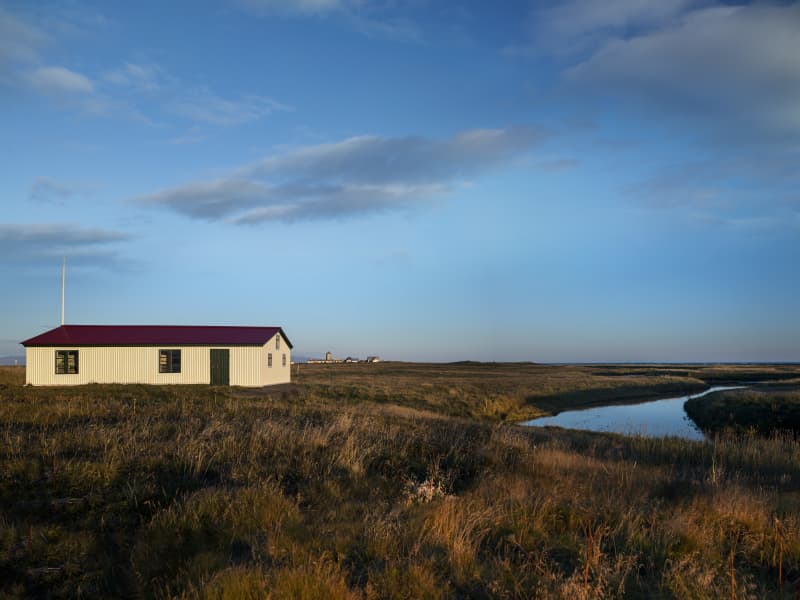
Baugstadir Creamery
The creamery was established by local farmers in 1905 and operated until 1952. Its products were butter and cheese. The Baugsstaðir creamery was powered by a water wheel and is the only one of Iceland’s creameries that still retains its original equipment. A little to the west are the ruins of the creamery’s storage, which was an icehouse and used to store products before they were transported to market. The creamery’s main markets were in England as well as in Iceland.
View
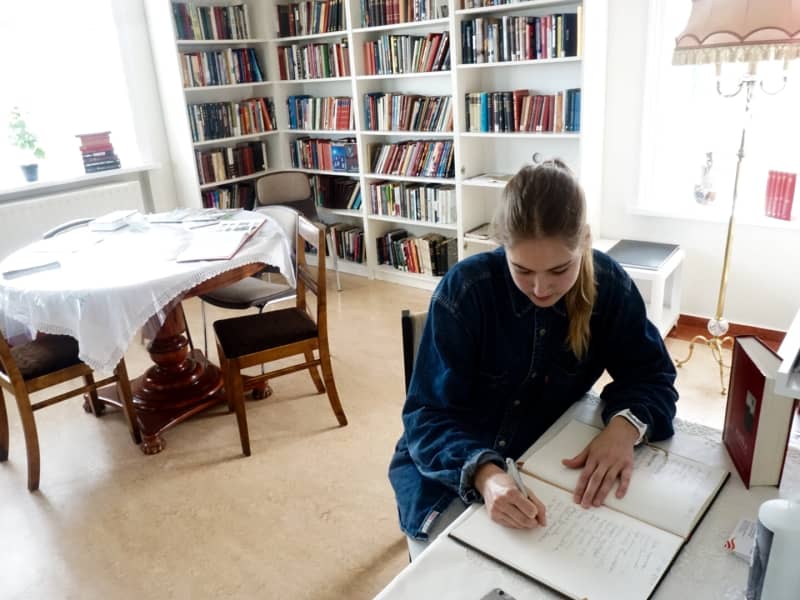
The Women's Book Lounge
The Women's Book Lounge, established in April of 2013, is an educational museum dedicated to Icelandic female writers. The lounge's objective is to preserve written works by Icelandic women; to introduce the authors and their works in Iceland and abroad, and to make the texts and information about the authors available to the public.
Opening hours: Arranged upon request.
View
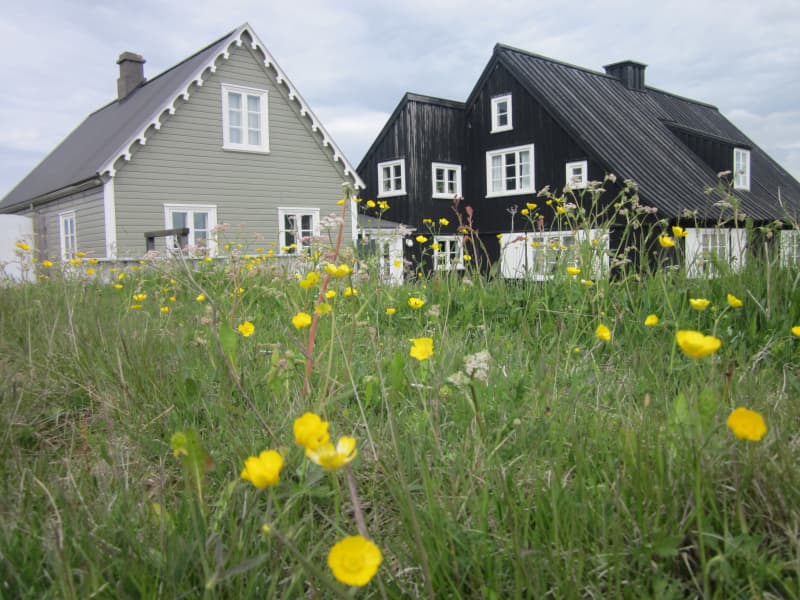
Árnessýsla Heritage Museum in Eyrarbakki
The Merchants House in Eyrarbakki, was built in 1765. The House was for two centuries the home of merchants, and one of Iceland’s major centres of culture. Diverse cultural and artistic trends reached The House during the time when Eyrarbakki was the main port and centre of trade in south Iceland, whose realm extended all the way east to Mt. Lómagnúpur by the Vatnajökull glacier.
Very interesting exhibitons in the center of Eyrarbakki village: The Mercants House, Egg House and Kirkjubær.
Opening hours:Open every day at summers 10-17 and by arrangement.
View
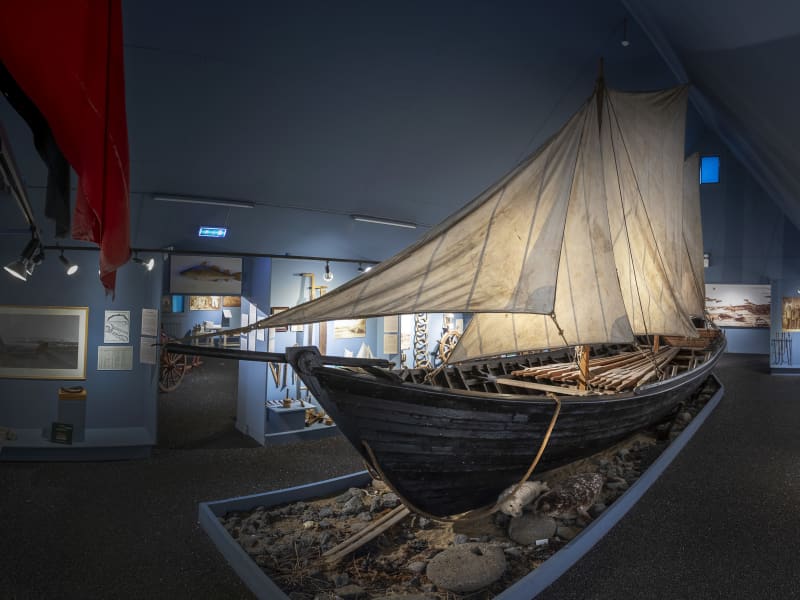
Eyrarbakki Maritime Museum
The Maritime museum in Eyrarbakki offers a unique trip back in time, where you can see numerous items from the time when sailors, living on the south coast, rowed out to sea every day. A large twelve-rower, Farsæll, is the largest item of the museum, built 1915.
Hours of Operation: May 1st - September 30th: Daily 11:00-17:00 Winter: By arrangement
View
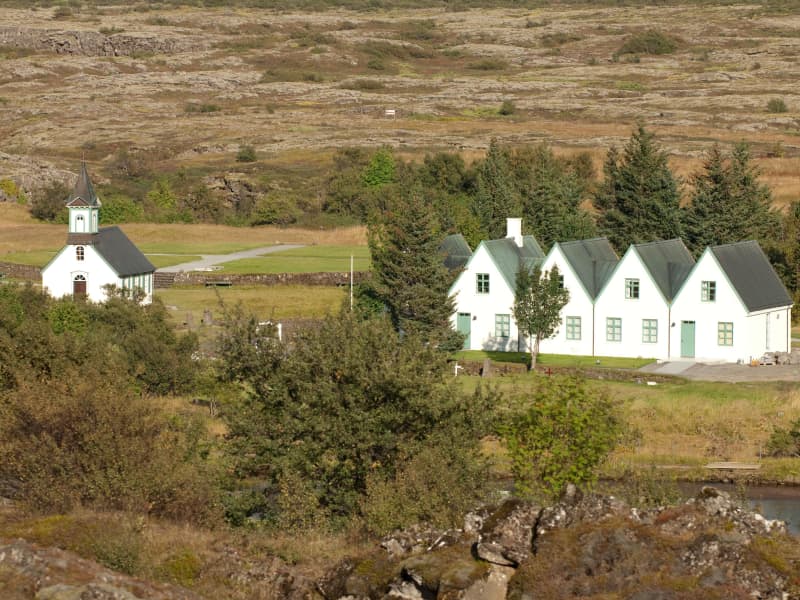
Þingvellir National Park
Þingvellir National Park is a designated UNESCO World Heritage site. It is one of the most important places in Icelandic history, as well as being famous for its unique geological features. It is among the three key locations on The Golden Circle.
The parliament plainsThe site has historical importance spanning over 1000 years. In 930, the Alþingi, one of the oldest parliamentary institutions in the world, was founded. In fact, Þingvellir literally translates to "parliament plains". The Alþingi met annually, and the Lawspeaker recited the law to all the gathered people and resolved disputes as well. This is where Christianity was made the official religion of Iceland around the year 1000. On June 17th, 1944, the independence of The Republic of Iceland was proclaimed in Þingvellir.Where Eurasia meets North AmericaÞingvellir has been a national park since 1928 because of its special tectonic and volcanic environment. The effect of the continental drift can be clearly seen in the cracks and faults traversing the region, the most famous one, Almannagjá, being a veritable canyon.
By Iceland's largest lakeÞingvellir is situated on the northern shore of Þingvallavatn, the biggest lake in Iceland. The river Öxará traverses the national park and forms a waterfall at the Almannagjá called Öxaráfoss. Together with Gullfoss waterfall and the Geysir hot spring area, Þingvellir is part of the famous Golden Circle travel route.
What to seeThe national park contains several points of interest, including Almannagjá Gorge, which showcases the effects of continental drift; Lögberg cliff, where the assembly of Alþing met; Öxarárfoss waterfall; and Peningagjá, a deep fissure with crystal clear water where visitors like to throw a coin and make a wish. A quaint wooden church stands in a picturesque location, and the national park offers a network of walking paths.
Activities and servicesGuests may opt to enter the park's visitor center and exhibition to learn more about Þingvellir's unique history and nature. Along with varied hiking options, visitors may enjoy bird-watching or angling. Fishing permits can be bought on location. Another popular activity at Þingvellir is snorkeling or diving with experienced local tour operators.
CampingÞingvellir is ideal for camping. There are several camping grounds at the national park, some of which offer showers and electricity.
View
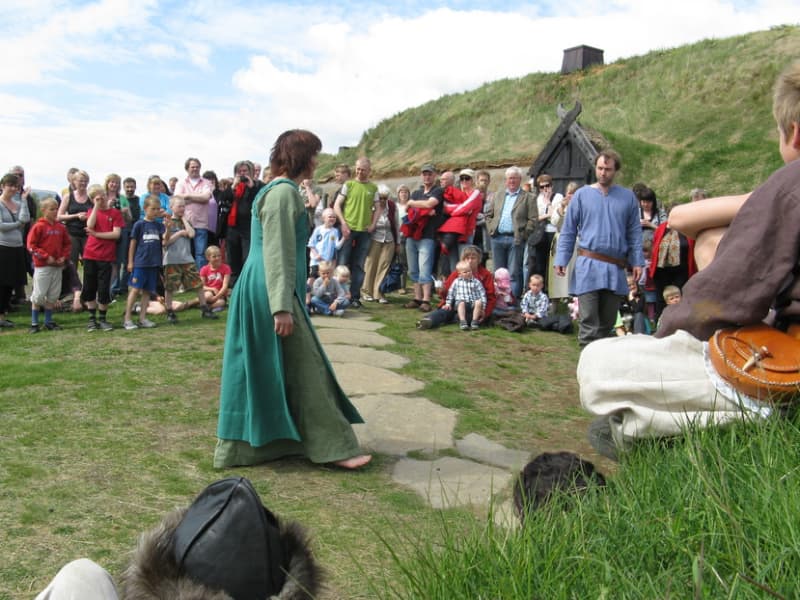
Visit vikings, The Commonwealth farm
The Commonwealth farm in Þjórsárdalur is one of Iceland's best kept secrets. The farmhouse, built on the site of one of the manor farms of the Age of Settlement, is constructed as experts thought it would have been.Visitors have the opportunity of acquainting themselves with the buildings the Icelanders' ancestors lived in and of learning about the conditions they lived in and about their daily life.
The Commonwealth farm is based on the ruins of the former manor farm, Stöng in Þjórsárdalur which is considered to have been abandoned after its destruction in the Hekla eruption of the 1104.
Opening hours:Open every day from June 1st to September 30th, 10:00-17:30Phone nr. 695-2330Closed during winter
View
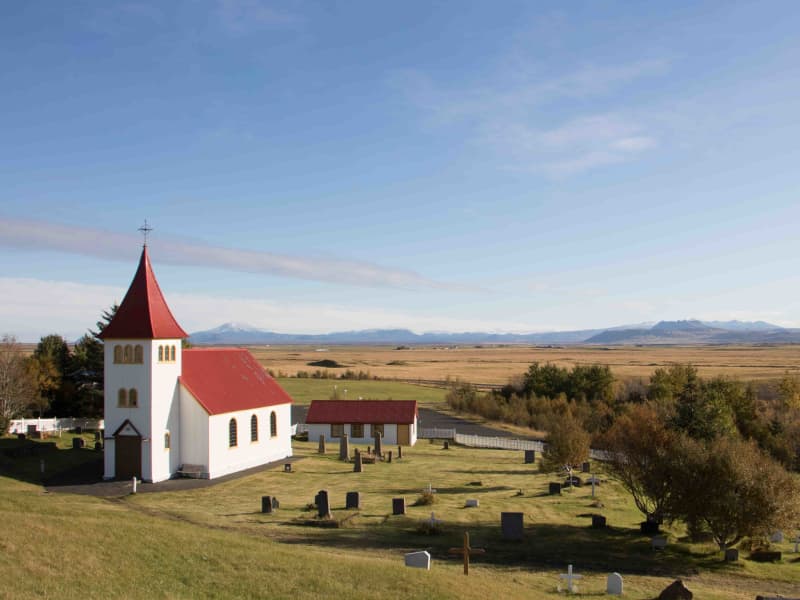
Oddi church
Oddi at Rangárvellir is a historic church site, farm and vicarage. In earlier times, Oddi was one of the most important seats of chieftains and education, with Snorri Sturluson being one notable figure who grew up there.
Oddi stands quite far down in the Rangárvellir region, just between Ytri- and Eystri-Rangá, with the river Þverá flowing just below Oddatorfa. Oddi was a major farm for a number of centuries and was blessed with rich pastures. The farm controlled numerous smallholdings and had enormous influence.
One of the more famous pastors who served at Oddi was poet Matthías Jochumsson, author of Iceland’s National Anthem, whose poetry includes glowing descriptions of the surrounding landscape.
It is believed that a church has stood at Oddi since Icelanders first adopted the Christian faith. The current church is a timber church from 1924 and seats around 100. The church was designed by Guðjón Samúelsson, the State Architect of Iceland. The church was renovated, painted and decorated in 1953 by Gréta and Jón Björnsson and re-consecrated the same year.
Among the most important items owned by the church are a silver chalice believed to be from around 1300, an altarpiece from 1895 showing Christ in the garden of Gethsemane and a baptismal font carved and painted by carpenter Ámundi Jónsson.
During the Commonwealth Era, Oddi was the ancestral home of the Oddverjar clan, one of the most powerful family clans of the period. The most famous member of the family was Sæmundur the Learned Sigfússon. Sæmundur the Learned studied at the Black School (the Sorbonne) in Paris. He was probably one of the first Icelandic historians to write a history of the Kings of Norway, although the manuscript is now lost. The grandson of Sæmundur the Learned was Jón Loftsson, who was one of the most powerful chieftains in Iceland and was, moreover, one of the most respected of them all, the most peaceful and beloved. Jón fostered Snorri Sturluson and educated him.
Six pastors serving in Oddi have become the Bishop of Iceland: Ólafur Rögnvaldsson, Björn Þorleifsson, Ólafur Gíslason, Árni Þórarinsson, Steingrímur Jónsson and Helgi G. Thordarsen.
The Oddi Association (Oddafélagið) was established in 1990. One of the main objectives of the Association is to re-establish the seat of learning at Oddi in Rangárvellir. Members currently number 200, and the patron of the Association is Vigdís Finnbogadóttir, the former President of Iceland. The Association holds the Oddastefna (Oddi conference) each year, where numerous lectures are given on the importance and history of Oddi.
The current pastor of Oddi is Elína Hrund Kristjánsdóttir.
View
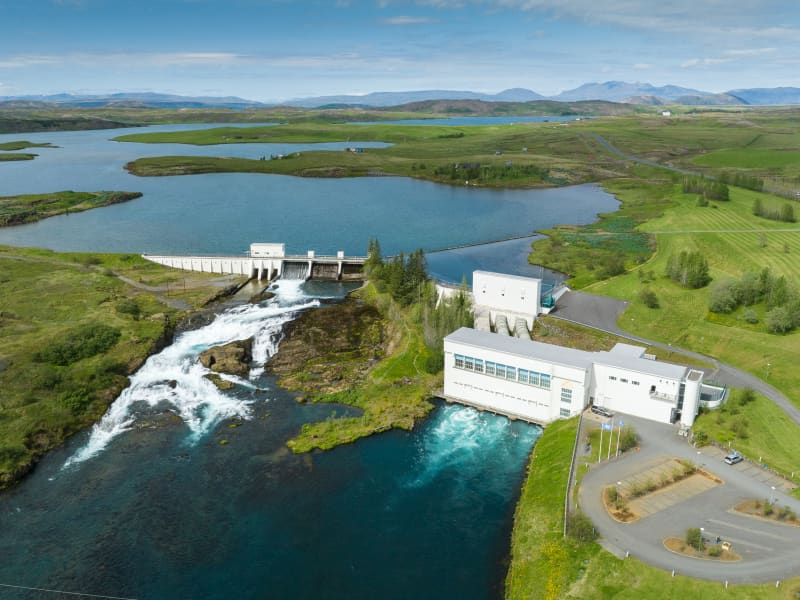
Powering the Future
Landsvirkjun's energy exhibition is located in Ljósafoss Power Station, about a 50-minute drive from Reykjavík.
The exhibition is interactive, with an emphasis on play and experience. It offers guests a glimpse into the world of electricity and introduces them to the renewable and sustainable energy generation methods used by Landsvirkjun.
Open every day this summer from 10:00-17:00, free admission.
Groups of 10 or more guests organized by travel agencies, companies, institutions, or associations are kindly asked to fill out this visit request - https://www.landsvirkjun.com/form/group-visit-request
View
Artists from South Iceland
Many famous Icelandic artists come from Southern Iceland, including painter Jóhannes S. Kjarval, who was born at Efri-Ey in Meðalland, writer Þórbergur Þórðarson, born at Hali in Suðursveit, composer and cathedral organist Páll Ísólfsson, born at Símonarhús in Stokkseyri, painter Ásgrímur Jónsson, born at Rútsstaðir in Flói, sculptor Sigurjón Ólafsson, born at Eyrarbakki, sculptor Nína Sæmundsson, born in Fljótshlíð, sculptor Einar Jónsson, born at Galtafell in Hrunamannahreppur and painter Júlíana Sveinsdóttir, born in Vestmannaeyjar. The artist Erró grew up in Kirkjubæjarklaustur.
Hveragerði – the town of artists
When Hveragerði was developing, it was a popular spot for writers, composers, painters and other artists. It was home to writers such as Gunnar Benediktsson, Helgi Sveinsson, Jóhannes úr Kötlum, Kristján frá Djúpalæk, Kristmann Guðmundsson and Valdís Halldórsdóttir, artists such as Gunnlaugur Scheving, Ríkarður Jónsson, Höskuldur Björnsson and Kristinn Pétursson and the composer Ingunn Bjarnadóttir.
The artists mainly settled in three streets in the west of the village: Laufskógar was the street where the composers lived, Frumskógar was the street of the poets and the artists based themselves in Bláskógar. You can find out information on these artists at the places they lived and in the town’s park.
View
The Culture Map of South Iceland
The southern part of Iceland is rich in history, art and cultural events. In the local museums and exhibitions you can find information on volcanoes, glaciers and the Icelandic biological diversity, literature and poets, Icelandic seafarers‘ history and marine biology, fishing, chess, rocks, and moss, in addition to the diverse history of various towns and villages in South Iceland. Learn about environmentally friendly hydro-power plants, the practical use of geothermal energy, and get familiar with what it is like to live in a geo-thermally active area. Explore local art, architecture, or maybe drop by the last cave-dwellers of Iceland.
The Culture Map of South Iceland contains an image of South Iceland and useful information about local museums and exhibitions. You can get the culture map at the local museums and exhibitions.
View
The emergence of towns and villages
Skálholt – a religious and cultural centre
Skálholt became an episcopal see in 1056 and became the nation’s main settlement, an honour it shared with Bessastaðir. Reykjavík was granted trading rights in 1786, but it was the establishment of Iceland’s first limited company around 1750 which laid the foundations for the development of a town. After a large earthquake in Southern Iceland in 1784, the episcopal see and the Latin school in Skálholt were closed and moved to Reykjavík several years later.
The growth of other villages
In the Middle Ages, when Skálholt was Iceland’s main settlement, Eyrarbakki was its main port. However, a village did not began to develop in Eyrarbakki, or indeed elsewhere in Iceland, until the 19th century. Eyrarbakki had its heyday from the mid-19th century until the first few decades of the 20th century. Eyrarbakki was one of the largest farms in Iceland and was in fact much bigger than Reykjavík, and for a time it appeared that it might become Iceland’s capital.
Around the same time, a village began to develop at Stokkseyri and soon afterwards at Vík í Mýrdal and Höfn í Hornafirði, and in mid-century Þorlákshöfn. Journalist Árni Óla called Þykkvabær a thousand year old country village and it is probably one of the oldest villages in the country. Vestmannaeyjar was granted trading rights at the same time as Reykjavík, 1786.
View

The Icelandic Horse
Many horse lovers are particularly fond of the Icelandic horse and its attraction is such that a few erstwhile tourists have decided to establish residence here, some permanently, to pursue their interest in and dedication to this unique breed. Small herds were first brought to Iceland by the first settlers from Norway some thousand years ago. No more horses from foreign parts have been allowed on the island since that time, resulting in a truly Icelandic horse. The Icelandic horse is even tempered and hardy and renowned for its ability to master diverse gaits, notably the famous tolt. The Icelandic horse has always been a part of the culture and well into the previous century, an integral part of the workforce, utilized for transport and as a pack and draft animal. In the last few decades however, it´s primarily used for breeding and many own the horses merely for the sheer pleasure of caring for and riding such a fine specimen. There are several horse farms open to visitors and horses are available for rental through various agencies.
View
